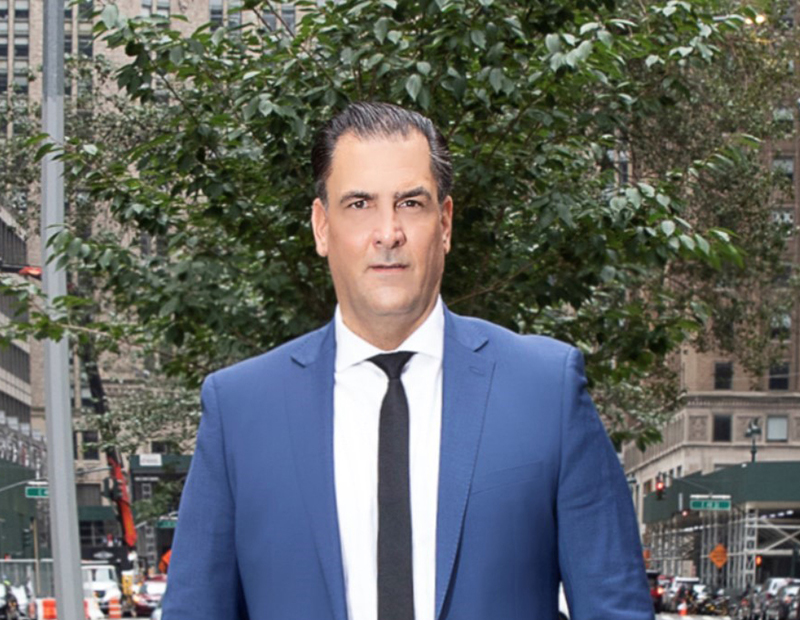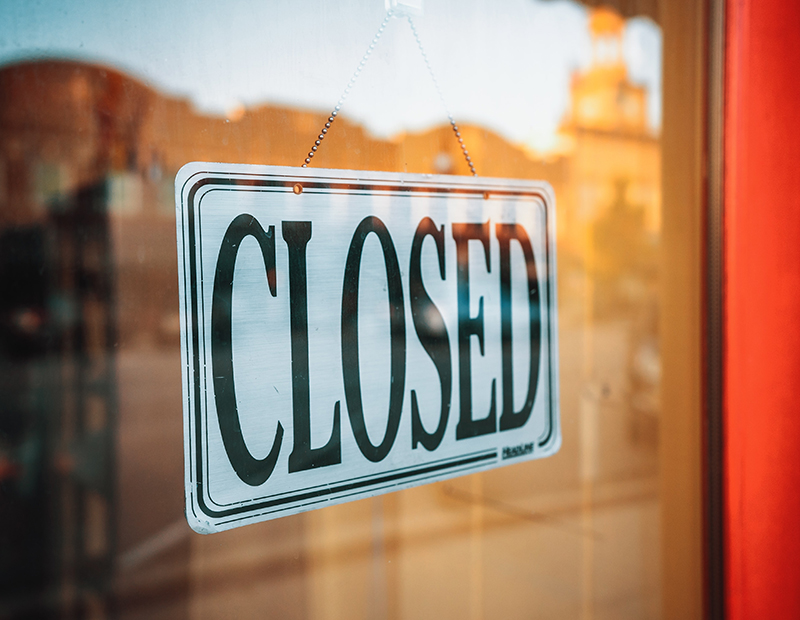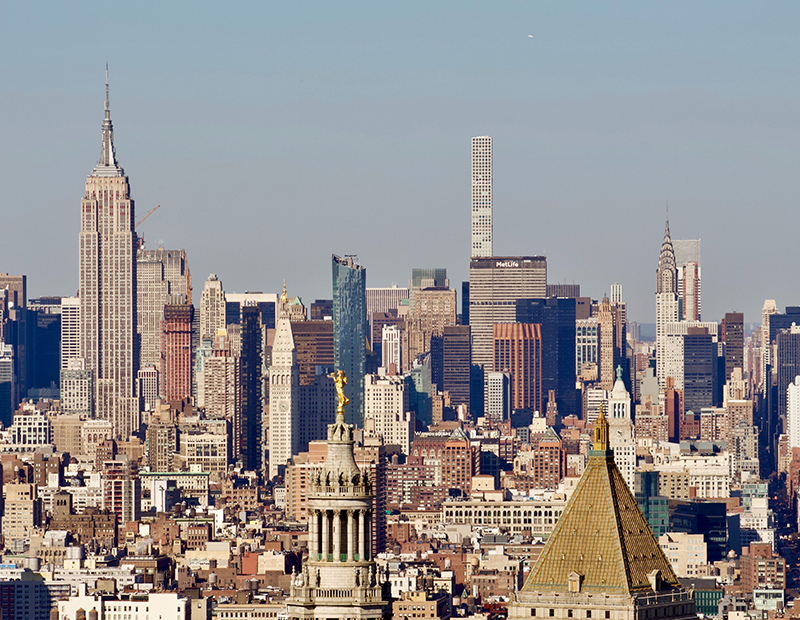Manhattan Retailers Face Uncertainty
Meridian’s James Famularo discusses retailers’ struggles during COVID-19.
New York City, one of the liveliest places in the world, has been nearly entirely silenced by the pandemic. Instead of the buzzing street life, the city is now a collection of empty sidewalks, empty subways, and signs that say, “Sorry, we are currently closed.”
Reality is becoming increasingly gloomier for retailers, as many of them are unable to keep up with the pandemic-induced economic burden. “Maintaining a business presence in Manhattan no longer makes sense financially,” said James Famularo, president of retail operations at Meridian Capital. In the interview below, Famularo paints a sobering picture of the current retail landscape in Manhattan and sheds light on possible post-COVID-19 scenarios the city will have to endure.
How is New York City dealing with the economic stress caused by the pandemic?
Famularo: Many New York businesses are leaving Manhattan and permanently closing or moving to more affordable areas with less COVID-19 restrictions. Building prices have dropped significantly due to commercial and residential tenants vacating without any obligation to pay. These vacancies have not only caused decreases in building value but because owners are still obligated to pay their mortgages and expenses, many cannot afford to hold their properties any longer and are selling at huge discounts.
Many residents fled Manhattan in the first few months of the pandemic. However, in recent months, many residents have come back, and the streets have been much more crowded with pedestrians. Walking through the city, you can see that most outdoor restaurants are filled. People are less scared than they were at the beginning of the pandemic, and a lot of young people plan on moving back to Manhattan at the end of the summer. They are using the money they have saved up during the pandemic to take advantage of reduced rents across the city.
READ ALSO: Retail Crisis Hits Small Shops the Hardest
How has the retail sector been impacted?
Famularo: As far as bars, restaurants and cafés, many have struggled significantly; they will close and never again be able to reopen. Most could not survive on takeout orders alone in the first few months, and now with indoor dining still prohibited, there is no way for them to reopen profitably. Fitness centers have also struggled significantly, as they have been mandated to remain 100 percent closed for nearly six months now.
Although retail stores could reopen, most have reduced store hours and are selling inventory at huge discounts. However, many retail tenants have been able to keep up with the rent to some degree. Those who have been the least-impacted are delis, grocery stores and pharmacies.
Why are retailers abandoning Manhattan?
Famularo: Retailers are abandoning Manhattan because they are no longer experiencing the benefits of running a business in New York City. Pre-COVID-19, retail was already down due to the increased online presence of retail shopping. Post-COVID-19, this trend has only magnified further. There are still a few retailers who offer unique experiences to customers by having a brick-and-mortar presence, but for the vast majority of retailers, maintaining a business presence in Manhattan no longer makes sense financially.
Owning a business in Manhattan is very costly due to the high rents and expenses in New York. This used to be worth it to business owners because New York is so highly populated and has many tourists. Now that many New Yorkers have fled the city and no one knows when residents or tourists will flock back, the revenue does not outweigh the costs for many Manhattan businesses.
What types of retailers have been struggling the most?
Famularo: Bars, restaurants, gyms and entertainment centers have struggled the most. They were not allowed to open at all for months during the pandemic. Restaurants are still not allowed to offer indoor seating, and bars are still mandated to remain closed if they do not serve food. Restaurants already operate on fairly low profit margins—averaging 10 percent—so only allowing takeout in the beginning and now being restricted to outdoor seating causes many of these restaurants to continue to struggle. Many restaurant owners fear the end of summer without knowing if they will be allowed to open for indoor dining. On top of this, even if indoor dining does open at, let’s say, 50 percent capacity, most restaurants will not survive at this level of operating.
Have retail tenants paid their rents in the past few months?
Famularo: For the most part, those who have the funds to pay have been trying their best to pay. Landlords are working a significant amount with their tenants to provide rent concessions or reduced rents. Pharmacies, groceries and delis have paid since they have been allowed to stay open. Most of the restaurants that have been open are paying reduced rents to landlords. Bars, gyms, galleries and other entertainment centers that have been mandated to remain closed since March are not keeping up with rent at all.
READ ALSO: Retail Trends That Will Remodel the Industry in 2020 and Beyond
What can you tell us about retail leasing activity in New York City nowadays?
Famularo: Landlords are working with tenants as much as possible. We have seen them grant significant rent concessions. Some offer 50 percent less than asking in the first year, with incremental bump-ups for the next couple of years. Some have offered extended rent concessions to existing tenants, and others have granted rent concessions to new tenants until the governor allows indoor dining to open. There are many creative ways landlords have been working with their tenants so that their retail space does not go vacant.
In the first few months of the pandemic, retail leasing activity was almost stagnant, as businesses and landlords were uncertain about how long this would last. In June, when Manhattan started to open again, activity started to pick up a bit. Our team has closed about 25 deals during the pandemic. Financially strong businesses from outside of New York are looking at the current situation as an opportunity to get a great deal on space. We have about 200 listings we are now actively working on, which signify the number of retail vacancies that have swept the city. With that said, we are very hopeful that many of these will close in the coming months as New Yorkers build back confidence.
How would you characterize the overall tenant and landlord sentiment in New York City, almost half a year into the health crisis?
Famularo: Uncertainty. Landlords are still uncertain when their tenants can begin paying them again, and tenants are unsure when their businesses will be profitable again. Most of this is out of everyone’s control, which causes a lot of uncertainty and fear.
What are your predictions for New York City’s retail sector? How will the recovery unfold?
Famularo: I predict that financially stronger tenants will replace the retailers that went out of business over the next couple of years. Restaurants and bars will likely open indoors to some capacity by the end of 2020. Although some will survive, many won’t, and vacancies across the city will continue to be above average for the next couple of years as business owners get back on their feet. Manhattan will get back to where it was before the pandemic, once there is a vaccine—probably a year from now. Right now is a great opportunity for businesses to move into the city at reduced rents while the economy slowly starts to pick back up.










You must be logged in to post a comment.